Chinese growth spurt
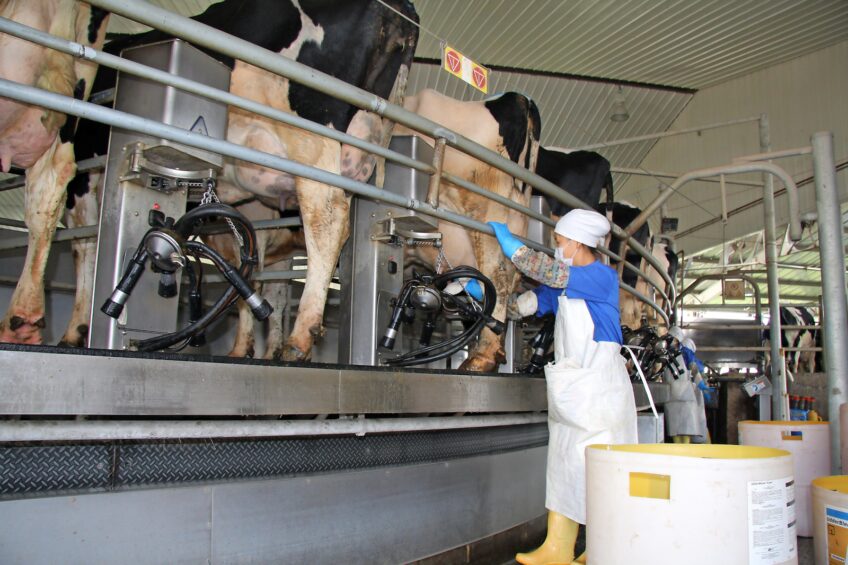
The Chinese consumer has regained confidence in Chinese dairy products. Professional Chinese dairy farms expand in order to meet the rapidly growing domestic demand for dairy. Huaxia dairy farm is expanding its herd from 14,000 to 24,000 cows.
In China the demand for dairy is high. Foreign dairy enterprises are lining up to supply dairy to the Chinese consumer. Nevertheless, the Chinese dairy sector itself is also accelerating growth to be able to meet their consumers’ needs. During a trip through China, Dairy Global saw several mega dairy projects under construction, which will accommodate tens of thousands of cows per location. And the Chinese aren’t only investing in cattle housing. On the way to Huaxia Farm a dairy processing plant was being built, flanked by a cattle farm under construction with 20,000 cows, planning to expand to 40,000 cows.
Huaxia dairy farm in Sanhe – just 57 kilometres from Tiananmen Square, the centre of the metropolis of Beijing – intends to massively expand over the next year. The farm was founded by two Chinese entrepreneurs in 2003, using money of private investors. Over the last 11 years the company has grown from 188 to 14,000 cows. The coming year it will scale-up to 24,000 cows. Manager of the farm is the experienced Berwick Settle, a cheerful New Zealander who has lived in China for years. He was previously a cattle farmer in New Zealand. Settle is a very busy man, but on his Sunday afternoon off he takes time to give insights into the Huaxia operation.
3 locations in China
Currently Huaxia Farm has three locations. Its main location is in Sanhe, a suburb of Beijing. The farm is located along a busy road, literally amid residential houses. The main location accommodates nearly 9,500 cows. Also calf rearing is done here. Redstar is located a few kilometres away, in the countryside. This newly built location houses 3,800 cows, including dry cows. A few dozen kilometres further Huaxia Farm has another ‘small’ farm of 750 dairy cows. All cows on the farms are Holsteins; American genetics, although most dams are from New Zealand and Australia.
Opposite the main location, across the road, is the farm’s feed centre, which was built four years ago. Corn for all three dairy farms is ensiled there, and it is designed for the storage of hay and straw as well. Four trucks are on the road 24/7 to transport feed to all three locations.
The farm’s newest expansion is taking place at a new location some 900 kilometres southwards, a short hop by Chinese standards. In the province of Jiangsu the company is in the process of building a farm with 4,000 cows. Next month the first animals will go there. In order to fill the barns the farm initially bought 3,000 Australian and New Zealand Holstein cows, yearlings and heifers. Filling the facility with cows from within the company turned out not to be possible on short notice. T
he company is also in the process of buying a farm with 6,000 cows. With a 95% chance of closing the deal, Settle expects contracts to be signed next month.
3,800 cows under one roof
The new location Redstar, a few kilometres away, is one to be proud of. On the 1st of August 2013 the farm with 3,800 cows came into operation. The main barn houses all 3,800 cows under one roof. It measures 510 meters in length, is 130 meters wide and has four cow groups, each with its own rations. The first group comprises of cows up until 120 days in lactation, the second group is for cows lactating more than 120 days, the third group consists of dry cows and group four is cows which will calve soon.
Outside it is over 300C; in the closed, dark stable it is noticeably cooler. Such temperatures cause heat stress, causing a significant production drop. A cooler barn climate is a bare necessity. That is why the entire side wall is made out of fabric which is constantly moistened and has ventilators behind it. The combination of evaporation and forced ventilation leads to an inside temperature which is 100C lower than the temperature outside.
The cows’ welfare appears to be just fine. Sprinklers, hanging above the feed fence, provide the cows with extra cooling every now and then. A thick layer of rice husks line the cubicles. On average the cows yield 9,000 litres per year. In summer production per cow is 28 litres per day, in winter 33 litres.
3 milkings per day
Location Redstar has two DeLaval-milking machines, a 2×12 herring bone and an 80-stand external milking rotary. The cows are milked three times a day. The staff work ethic follows a typically ‘Asian’ protocol: every employee has their own task. One woman pushes the cows into the waiting room for 350 cows. A second woman cleans the udders with a cloth, a third woman sprays the teats, after which a fourth woman places the milking cups on the teats. A fifth woman checks whether the cups stay in place during the milking process, after which a sixth woman monitors the automatic release of the cups.
The main location has two 50 stand rotaries and several herring bone type milking parlours, all DeLaval. In Madazaou there is a 2×20 Boumatic. You will not find milking robots on Chinese farms: too expensive. Labour is simply too cheap to consider investing in robots. The average monthly salary is about 3,000 RMB (€350).
The only reason to switch to milking robots, one day, would be to eliminate human error, Settle says. “The average cell count for instance lies between 180,000 and 240,000. Given the enormous herd we milk this is not a bad value, but it could be lower. The staff attaching the milking cups however are not highly-skilled and do not always recognise an inflamed quarter, leading to bad milk flooding into the tank too often.”
Limited land
Huaxia Farm rents 4,000 mu of land. A mu is a Chinese surface unit and equals 666 square meters. 4,000 mu corresponds to 270 hectares, on which mainly corn and grass is grown. Calling 270 hectares ‘limited’ for a farm with 14,000 cows is an understatement. Yet, ‘arranging’ sufficient feed is not a problem. The region is known as China’s granary. Sufficient amounts of corn can be purchased from local farmers. Lucerne is imported from the US, rye hay from Australia. Feed represents 60% of the cost price.
Around Beijing there is nothing but small parcels of land. Huaxia Farm rents its parcels from a village representing 3,500 to 4,500 small land owners. The company pays rent to the village representative, who in turn pays the small farmers. All the little parcels are combined into a number of larger plots of land. It is regrettable that not all farmers have signed. There exist large parcels of 10 hectares or more, where a handful of farmers work a piece of land of 18 meters wide, right in the middle of the parcel. Due to the small scale small farmers harvest around 45 tonnes of corn per hectare. Huaxia Farm-plots can be worked and fertilised more efficiently, resulting in an average yield of 50 to 60 tonnes of corn per hectare.
In order to guarantee food security Settle would want to purchase more land, but it is difficult to rent more land in the region. There is an enormous hunger for land, especially due to building activity. “Ten years ago the main location was located in a rural area, now it is surrounded by buildings.”
Lower milk price due to imports
Huaxia Farm supplies several buyers, including Danone, Mengniu Dairy Company Limited, Yili and Shanghai Bright. Five percent of Huaxia Farm’s milk is processed into pasteurised and sterilised milk and yogurt. This is sold in well-known supermarkets, under Huaxia Farm’s own brands Wondermilk and Wonderyogurt. Positioned as Chinese A-brands, the company creates added value.
The considerable export to China from abroad had an adverse impact on the milk price. This decreased from 6 RMB (€0.51) per kilo last year to 4.8 RMB (€0.41) per kilo milk now. At this farm the cost price is €0.27 per kilo, so despite the lower milk price, the farm is still making a profit.

PROFILE
Berwick Settle (47) is the manager on Huaxia Farm in the Chinese town of Sanhe. The farm has 14,000 cows on three locations. Production per cow: 9,000 litres per year. Fat: 3.8 %, protein: 3.3 %. Cell count: 180,000 to 240,000. Daily production: 200 tonnes of milk. 400 employees, of whom 250 for cattle. Other staff: cooks, guards, administrators, cleaners etc. Strategy: To benefit from the increasing Chinese demand for high-quality dairy products with its own dairy brand Wondermilk.
Join 13,000+ subscribers
Subscribe to our newsletter to stay updated about all the need-to-know content in the dairy sector, two times a week.
 Beheer
Beheer















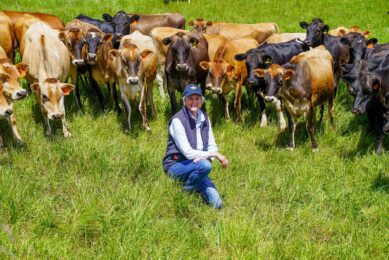
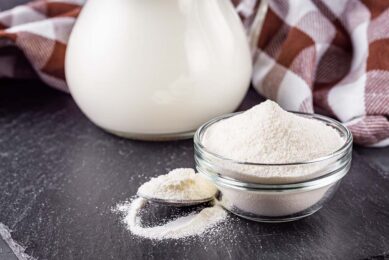
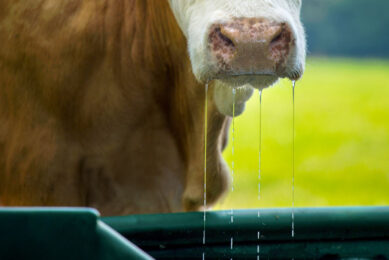
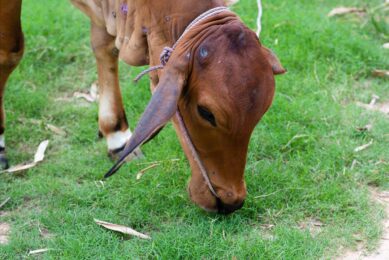
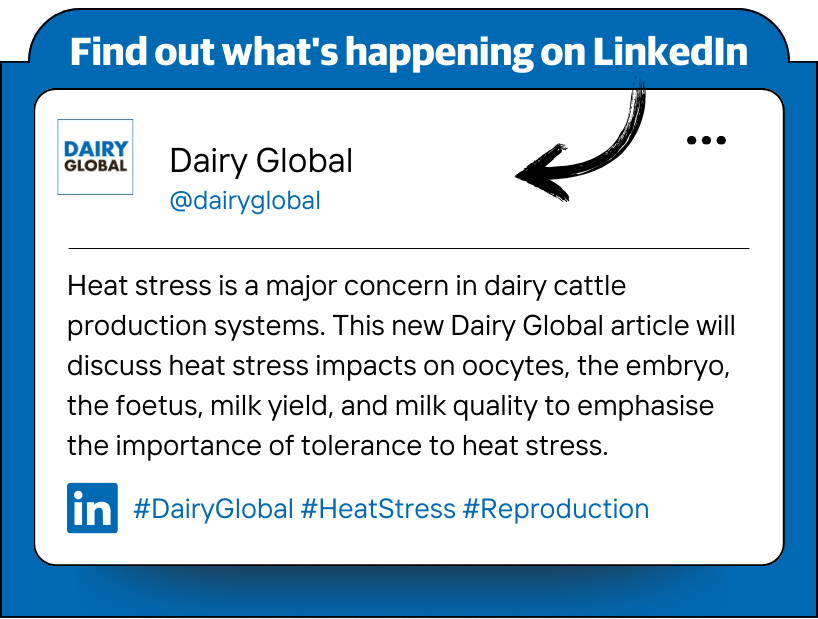



 WP Admin
WP Admin  Bewerk bericht
Bewerk bericht